How to make a cesspool without a bottom: technological features of construction
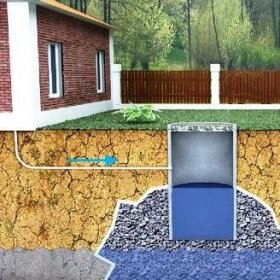
The easiest option for a sewerage device in a summer cottage is cesspool without bottom. This is a simple design that does not require complicated maintenance or weekly cleaning. However, when creating it, it is especially important to take into account sanitary and hygienic requirements. Let's take a closer look at the technology of its device.
The device and principle of operation of the cesspool
This is perhaps the oldest sewer device invented by mankind.
At first glance, making the design is very simple:
-
- Choose a suitable place on the site.
- Dig a fairly deep hole.
- Close the walls of the pit with a layer of concrete, brickwork, concrete rings, etc.
- Make a sewer trench.
- Bring pipes from the house and other buildings to the cesspool.
Arrange the overlap.
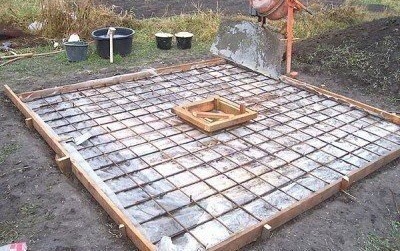
For large cesspools, overlap is required, it can be poured directly at the facility or ready-made reinforced concrete slabs can be installed
Sewage entering the pit will gradually seep through the soil, which serves as a natural filter. In this case, solid sediments remain in the pit and are gradually pressed. When the pit is full, it is buried, and a new waste tank is made nearby. Over time, the waste of human life will be processed by bacteria into valuable fertilizer for a personal plot.
For more information about the types of bacteria, their forms, pros and cons, read our article:https://aquatech.tomathouse.com/en/kanalizaciya/yamy/sredstvo-dlya-vygrebnyx-yam.html.
Features of construction on light soils
The water permeability of the soil can vary greatly depending on its type. For example, light soils, such as:
- sandy;
- peaty;
- loess
they pass water perfectly, sometimes even too well. If the wastewater enters the earth too quickly, they simply will not have time to be cleaned. As a result, contamination of groundwater can occur, that is, that water that comes from a well or from a well for the needs of residents of the house.
This problem can be solved by concreting not only the walls of the cesspool, but also parts of its bottom. Thus, the rate of runoff into the ground can be significantly slowed down.
Tip: If subsequently it turns out that the wastewater leaves the drive too slowly, you can arrange an additional drainage system, simply by breaking one or more holes in the concrete layer.
Clay Filtration Rate Control
But clay soils absorb moisture very slowly, and this can cause the cesspool to overflow without a bottom. In such a situation, it is best to provide for additional drainage. To do this, you must:
- At the bottom of the finished cesspool, drill several holes to the maximum possible depth.
- Lower the perforated plastic pipes into the drilled wells.
- Leave 1-1.5 meters of pipe above the surface of the bottom of the pit.
- Close the top of the pipe with a special plug to prevent clogging of the additional drain.
As a result, the flow of wastewater into the ground will accelerate, but particulate matter will not penetrate into the ground.
Another way to solve the problem is a cesspool with overflow. This design is somewhat more complicated, but it allows you to cope with excess wastewater very efficiently. The overflow is arranged like this:
-
- Next to the main cesspool, you need to dig one more, additional.
- The pits are connected by a trench.
- A sewage pipe is placed in the trench, which is placed under a slope.
The end adjacent to the main pit should be higher.
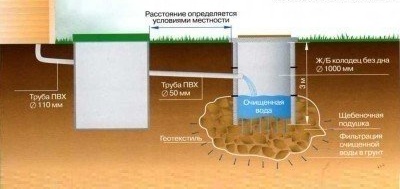
This is how the design of a cesspool with overflow looks - through the second well, absorption into the soil occurs, and the first should be leakproof
When the level of wastewater in the first pit approaches critical, excess moisture will flow into the second pit. Solid sewage and faeces will remain mainly in the first pit, and in the second part of the structure it will be almost empty, which will allow to get rid of sewage on dense clay soils much faster, since the absorption area will increase.
Tip: To understand the type of soil on the site, you need to order geological studies from specialists. The same information can be obtained by interviewing the owners of neighboring plots. In this case, it is worth paying attention not only to the state and structure of the soil, but also to the level of groundwater at different times of the year. A high level of hot water can be a big problem when installing sewage systems, but there is still a way to solve it. Read more in our article:https://aquatech.tomathouse.com/en/kanalizaciya/septiki/septik-stroy/septik-pri-vysokom-urovne-gruntovyx-vod.html
Sanitary requirements
A cesspool made without a bottom can pose a certain danger to human health, since runoff goes directly into the ground.
To prevent pollution, a number of standards have been established that must be strictly adhered to:
- The distance from the drinking well to the cesspool should be at least 30 meters.
- On clay soils, this figure can be reduced to 20 meters.
- On sandy and sandy loamy soils, the distance should be increased to 50 meters.
- The depth of the cesspool should be determined taking into account the level of groundwater, as well as the increase of this level during the spring flood.
- Do not build a cesspool without a bottom if the volume of effluent exceeds one cubic meter per day.
Subject to these norms, a cesspool will become a completely safe and least costly option for draining sewage in a summer cottage.
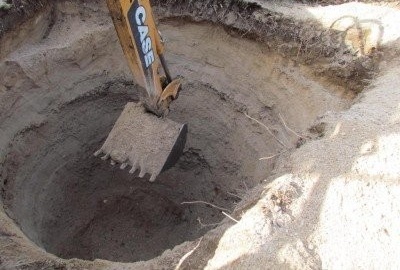
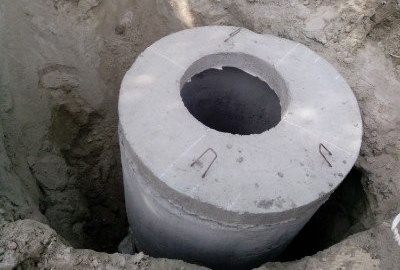

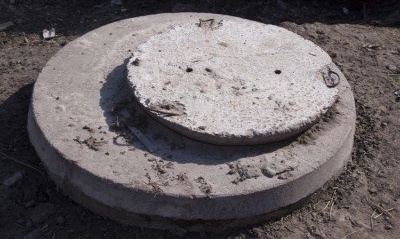
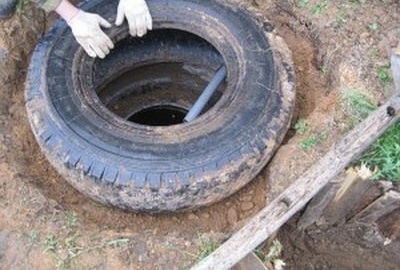
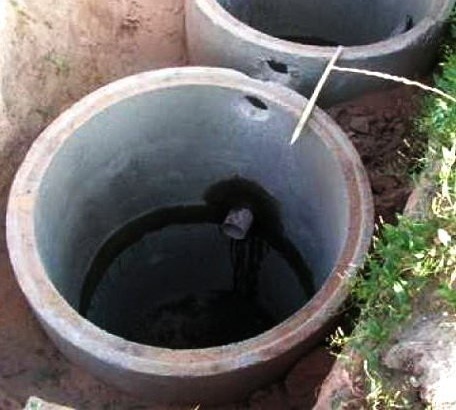

2 comments